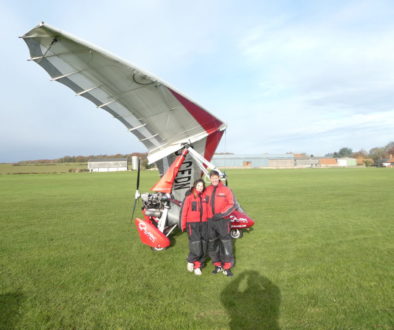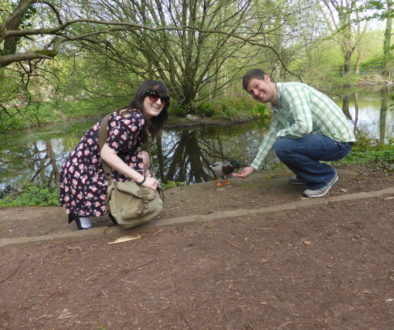Secret Dates: Christian Sites
City of London Christian Heritage Tour
When you think of Christian sites, you will probably think of Bethlehem, Jerusalem or the Vatican City. However, who knew that London has so much religious significance of its own? For this secret date, we went in search of the Christian sites and people associated with England’s capital city who had a huge impact on the development of Christianity. We did this through a guided tour with Ben Virgo, of the Christian Heritage London organisation.
The Christian Heritage Centre London is based at St Botolph-without-Aldersgate Church, and it is there that our tour began. In fact, we were convinced that we had missed the start of our tour after getting hopelessly lost due to some roadworks. Ben’s son Gil joined us to take photos and video, since it was such a lovely day. We didn’t have great luck with our own photographs today however, since within minutes of the start of the tour, our brand new Lumix TZ90 camera broke! An error came on saying ‘system error (zoom)’ and the camera would no longer work. Argh! It meant that we had to take photos for the rest of the day on Amy’s old phone camera. This image of the entire group is thanks to Gil, who kindly sent his shots to us after the tour.

The tour showed some amazing buildings, but was more about the people
Our tour wasn’t necessarily about the buildings, as amazing as they were. It was more about the people who were associated with those buildings, who made a huge impact on Christianity over the years. Nethertheless, the church of St. Botolph-without-Aldersgate is still very impressive indeed with an extremely valuable painted window the highlight. The organisation has an exhibition there too. Ben kindly gave us a free guidebook about it, since we didn’t have much time to see it today. In fact, what time we did have was taken up by our dysfunctional camera. We were also given a book about the 500th anniversary of the reformation, which is this year.

Outside the church is Postman’s Park. We recognised it straight away from a scene in the movie Closer, which we watched last year. The main attraction of course is the tiles on the wall that make up the Memorial to Heroic Self Sacrifice. Each of them is dedicated to a person who has given their lives to save others. It started with Alice Ayres, who saved some children from a burning house. I’m sure it was Alice who gave the character in Closer her new name.
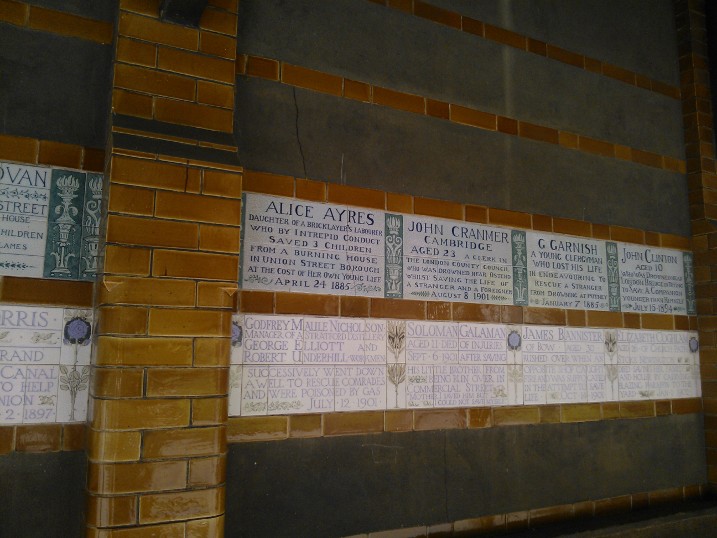
St Paul’s Cathedral is an iconic site
Our first stop on our tour around the City of London was the ruins of Christ Church Greyfriars, on Newgate Street. A religious site since the 1200’s, it was badly damaged by the Blitz. Nowadays its ruins are a picturesque public garden. We began to see a theme of the tour being to celebrate those people who had devoted their lives to help the poorest in our society, as Jesus did. Of course, St Paul’s Cathedral is perhaps the most iconic religious site in London. One notable event at the Cathedral was the trial of early Bible translator John Wycliffe. He was tried for heresy and his books burned.
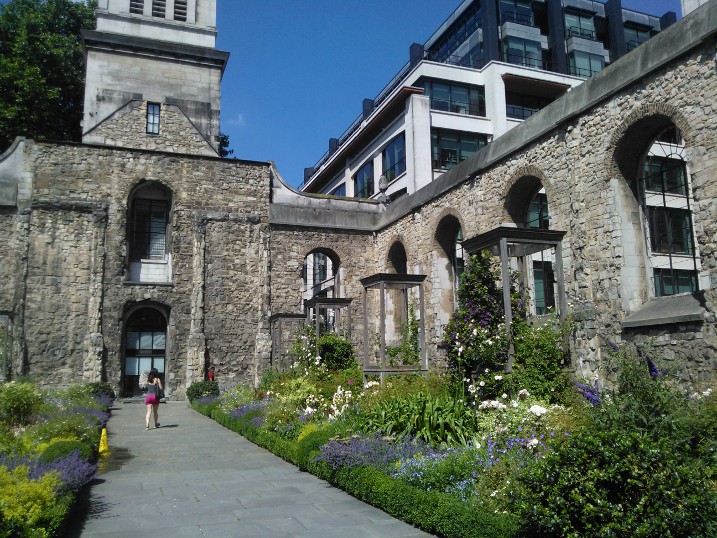
In the churchyard, we saw a bronze statue of John Wesley, the co-founder of Methodism. Wesley was a short man, who spent two years preaching unsuccessfully in America. This was a result of preaching the law, rather than the spirit. His experience on Aldersgate Street (where our walk began) in 1738, where he claimed his heart strangely warmed, changed that forever. Around the corner is the site of St Paul’s Cross. Nowadays, we have a 20th century doric column topped by a golden statue of St Paul. However, the previous medieval cross was the site used for huge announcements, and most importantly the English Reformation. It was destroyed by Puritans in the English Civil War. Copies of William Tyndale’s New Testament were burned by the cross in the 16th century.

Did you know there was a Queen Philippa?
Our next stop was St Mary Le Bow Church on Cheapside. Ben pointed out the incongruous nature of having a street called Cheapside within the ultra-rich City of London. Considered second in importance only to St Paul’s Cathedral in the area, it was damaged during the Great Fire of London, and rebuilt by Wren. A Queen once fell from the balcony here whilst watching a jousting tournament. From here, we headed down some narrow, Venetian-style streets. We ended up at the Parish Church of St. Stephen Walbrook, another Wren church. Unfortunately the church was locked up so we couldn’t see much inside, though it was inside this church that the Samaritans charity began.
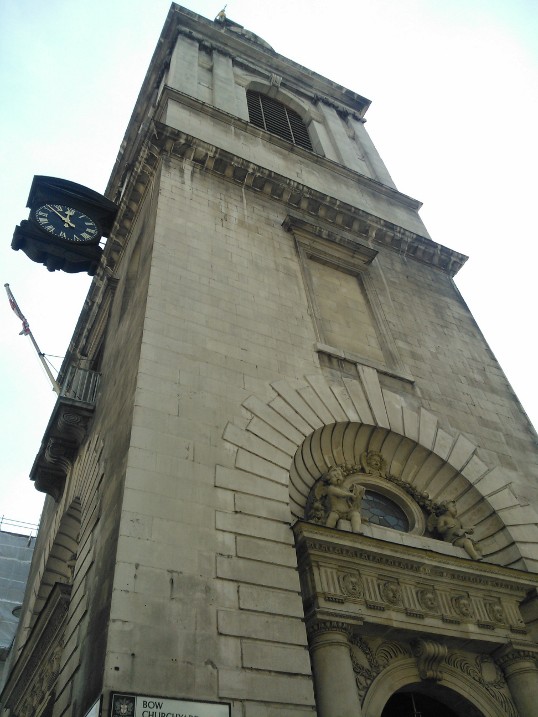
A highlight was the Parish Church of St Mary Woolnoth, since Ben had the keys enabling us to go inside. The main story that Ben told us was that of John Newton. Newton was a much-despised slave trader, who was left on an island and treated as a slave himself. After being rescued, he had a spiritual awakening, returning to England where he eventually became the rector in this very church. He met here with William Wilberforce to campaign for the abolition of slavery, and also wrote hymns including Amazing Grace. We were allowed a good amount of time to look around the church. It is very much so intact apart from missing its balcony.
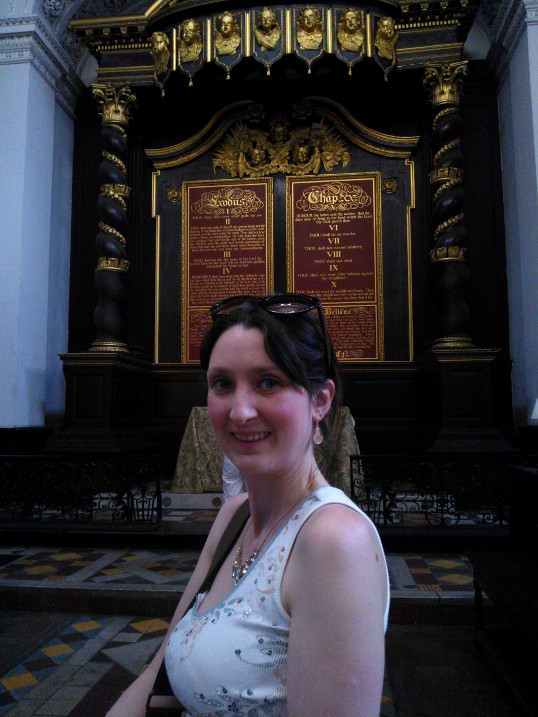
Is the Queen going to make an appearance?
As we walked further across the City of London, Ben pointed out the site of Bedlam asylum, where John Newton’s niece was kept. We were stopped from crossing a road by the police, who were escorting some VIP’s. We wondered who it might be – Royals or politicians were the obvious candidates. However, it turned out to be a cavalcade of soldiers, probably on their way to the Trooping of the Colour. We then stopped at the Guildhall, which also has links to the Reformation as the site where many people, including a Queen, were tried for treason. Underneath the Guildhall is a Roman Ampitheatre, which is well worth visiting.
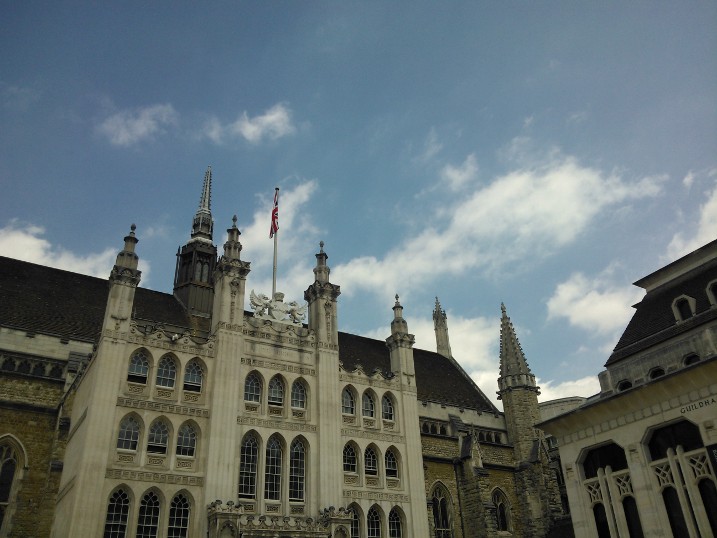
Another of the oldest parts of London’s history is the City Wall, which also goes back to Roman times. Whilst here, we were treated to a fantastic flypast by iconic RAF planes and the Red Arrows, for the Trooping of the Colour. We were in a fantastic position to watch it. They flew right above us, with some great reflections in the tall glass buildings around us. Our next stop was the Museum of London. Outside the Museum is something that we barely noticed on our last visit here. It is a large and striking plaque which contained the words of John Wesley, which relate to his conversion very close to this site.

Martyrs are remembered with plaques
The walk continued along the Barbican’s aptly named John Wesley Highwalk, to the ancient church of St Bartholomew-the-Great, founded originally as an Augustinian Priory. It is adjoined to the nearby hospital, and has been used in many great films. Continuing through some very historic, serene areas of London that you would never even know existed, we came to a plaque on the wall of St Bartholomew’s Hospital. It marks the spot where three men were burned at the stake for their religious beliefs in the 1500’s. One of them, John Rogers, was denied a meeting with his wife before his death, as they claimed that priests shouldn’t be married.

Another young woman, Anne Askew, was burned at the stake, after being tortured on a rack, for her Protestant beliefs. Unrelated to the tour, we also passed an area of the hospital that has become a strange shrine of sorts to Sherlock Holmes. This came after the character in the BBC drama Sherlock leaped to his apparent death here. Our next stop was the rather rudely named Cock Lane, a street with history dating back to medieval times. A small golden child statue on the wall signifies where the Great Fire of London reached. On Cock Lane, John Bunyan, who wrote the Pilgrim’s Progress, died, and he is buried nearby.
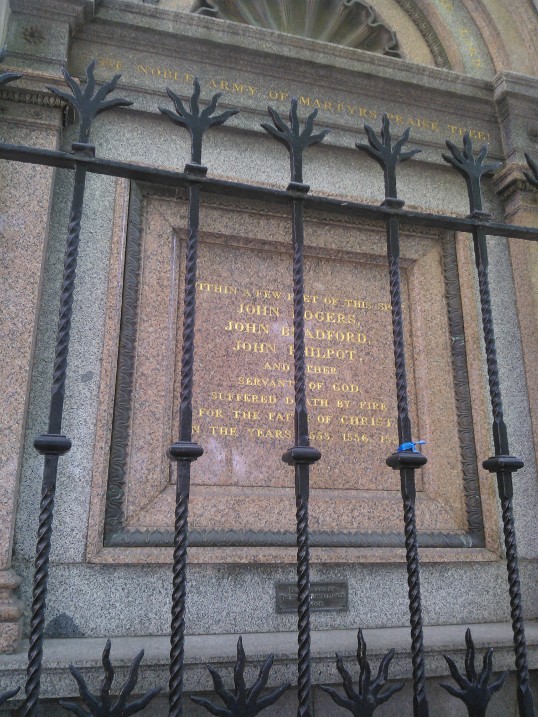
Elizabeth Fry was a model of selflessness
The final stop on our tour was the Old Bailey. Here, Elizabeth Fry, the ‘angel of prisons’, visited regularly, despite being urged not to. Her compassion for the prisoners, and tireless campaigning, resulted in them being given better conditions to live in. Fry was on the old £5 notes. Ben also pointed out the statue of justice on the roof of the Old Bailey. He believes it fitting that the only sculpture higher in the London skyline is the cross on the top of St. Paul’s Cathedral. It was a fascinating tour which taught us much about some extraordinary figures in church history that all did amazing acts of selflessness on these very streets we walked upon today.
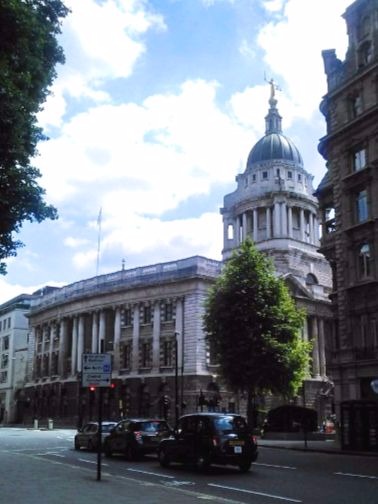
The tours of the City of London come very highly recommended, at just £10 per person, for around three hours of expert guidance. Although a Christian heritage tour, people of all faiths and none would find the tours fascinating and inspiring. London has a strong connection with Christianity. Learning about the figures that shaped worship in the country is essential if you want to truly understand the city, and many of its traditions. Bear in mind, this tour was just of the small City of London area. You can find many other Christian sites across the city. They include numerous other Cathedrals, Westminster Abbey, important sites in the foundation of Methodism and Anglicanism, and the oldest complete copy of the New Testament in existence, at the British Library.
Did you know how closely London was entwined with Christianity? Are there any other important sites that we have missed off?
Many thanks to Gil Virgo, for the kind use of his photograph as the featured image in this post.
